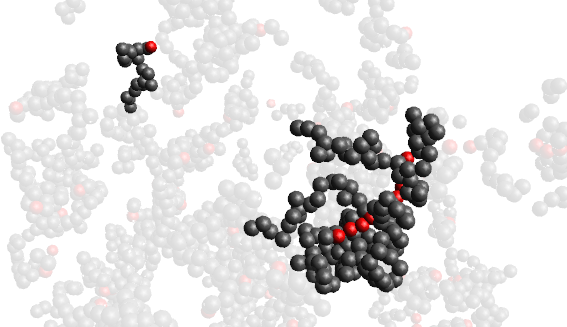Sticker-and-Spacer Model for Amyloid Beta Condensation and Fibrillation
Published in [Frontiers in Molecular Neuroscience](https://doi.org/10.3389/fnmol.2022.962526), 2022
Cite: Jack Connor, Steve Quinn, Charley Schaefer, "Sticker-and-Linker Model for Amyloid Beta Condensation and Fibrillation." Frontiers in Molecular Neuroscience. 15, 962526 (2022)
A major pathogenic hallmark of Alzheimer’s disease is the presence of neurotoxic plaques composed of amyloid beta (Aβ) peptides in patients’ brains. The pathway of plaque formation remains elusive, though some clues appear to lie in the dominant presence of Aβ1−42 in these plaques despite Aβ1−40 making up approximately 90% of the Aβ pool. We hypothesize that this asymmetry is driven by the hydrophobicity of the two extra amino acids that are incorporated in Aβ1−42. To investigate this hypothesis at the level of single molecules, we have developed a molecular “sticker-and-spacer lattice model” of unfolded Aβ. The model protein has a single sticker that may reversibly dimerise and elongate into semi-flexible linear chains. The growth is hampered by excluded-volume interactions that are encoded by the hydrophilic spacers but are rendered cooperative by the attractive interactions of hydrophobic spacers. For sufficiently strong hydrophobicity, the chains undergo liquid-liquid phase-separation (LLPS) into condensates that facilitate the nucleation of fibers. We find that a small fraction of Aβ1−40 in a mixture of Aβ1−40 and Aβ1−42 shifts the critical concentration for LLPS to lower values. This study provides theoretical support for the hypothesis that LLPS condensates act as a precursor for aggregation and provides an explanation for the Aβ1−42-enrichment of aggregates in terms of hydrophobic interactions.

